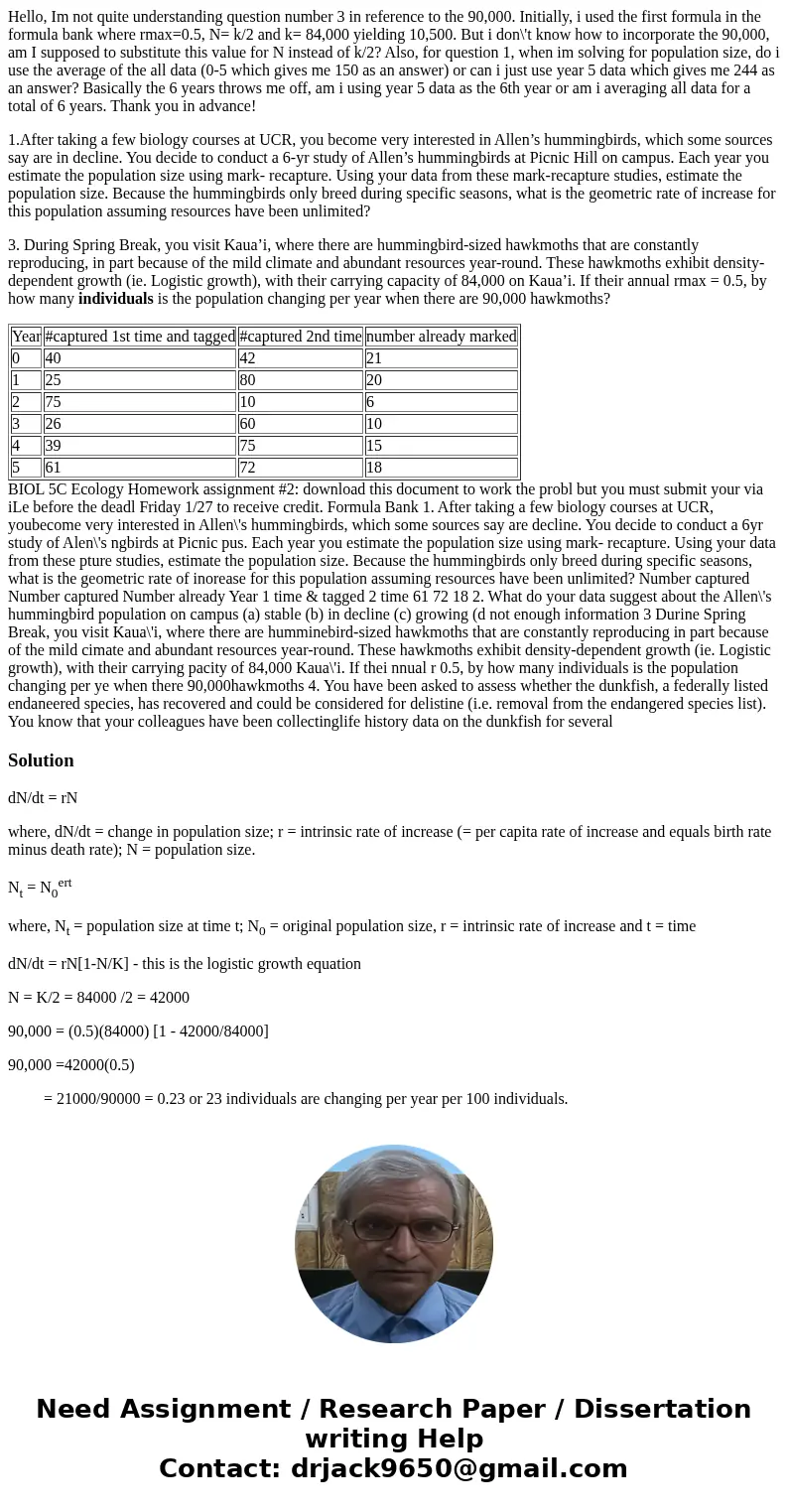Hello Im not quite understanding question number 3 in refere
Hello, Im not quite understanding question number 3 in reference to the 90,000. Initially, i used the first formula in the formula bank where rmax=0.5, N= k/2 and k= 84,000 yielding 10,500. But i don\'t know how to incorporate the 90,000, am I supposed to substitute this value for N instead of k/2? Also, for question 1, when im solving for population size, do i use the average of the all data (0-5 which gives me 150 as an answer) or can i just use year 5 data which gives me 244 as an answer? Basically the 6 years throws me off, am i using year 5 data as the 6th year or am i averaging all data for a total of 6 years. Thank you in advance!
1.After taking a few biology courses at UCR, you become very interested in Allen’s hummingbirds, which some sources say are in decline. You decide to conduct a 6-yr study of Allen’s hummingbirds at Picnic Hill on campus. Each year you estimate the population size using mark- recapture. Using your data from these mark-recapture studies, estimate the population size. Because the hummingbirds only breed during specific seasons, what is the geometric rate of increase for this population assuming resources have been unlimited?
3. During Spring Break, you visit Kaua’i, where there are hummingbird-sized hawkmoths that are constantly reproducing, in part because of the mild climate and abundant resources year-round. These hawkmoths exhibit density-dependent growth (ie. Logistic growth), with their carrying capacity of 84,000 on Kaua’i. If their annual rmax = 0.5, by how many individuals is the population changing per year when there are 90,000 hawkmoths?
| Year | #captured 1st time and tagged | #captured 2nd time | number already marked |
| 0 | 40 | 42 | 21 |
| 1 | 25 | 80 | 20 |
| 2 | 75 | 10 | 6 |
| 3 | 26 | 60 | 10 |
| 4 | 39 | 75 | 15 |
| 5 | 61 | 72 | 18 |
Solution
dN/dt = rN
where, dN/dt = change in population size; r = intrinsic rate of increase (= per capita rate of increase and equals birth rate minus death rate); N = population size.
Nt = N0ert
where, Nt = population size at time t; N0 = original population size, r = intrinsic rate of increase and t = time
dN/dt = rN[1-N/K] - this is the logistic growth equation
N = K/2 = 84000 /2 = 42000
90,000 = (0.5)(84000) [1 - 42000/84000]
90,000 =42000(0.5)
= 21000/90000 = 0.23 or 23 individuals are changing per year per 100 individuals.

 Homework Sourse
Homework Sourse